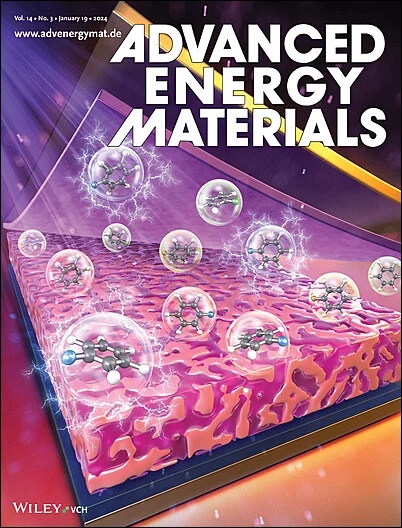解决循环使用寿命结束的阴极材料化学降解的固有挑战
IF 26
1区 材料科学
Q1 CHEMISTRY, PHYSICAL
引用次数: 0
摘要
回收报废(EOL)锂离子电池(lib)对于从EOL电池废弃物中的关键材料中保留宝贵资源非常重要。直接回收方法提供了一个机会,以最少的再加工回收完整的有价值的正极材料。直接回收过程的一个重要步骤是再提纯,用于还原EOL正极材料中的锂含量。然而,很少有人研究水洗或粘合剂去除等预处理步骤如何影响直接回收过程中的还原方法。本文研究了低温化学氧化还原介质还原过程中预处理步骤遗留的氟副产物的演变过程。提出了一种简便的洗涤步骤,作为调解表面污染对化学净化性能不利影响的解决方案。经过预还原洗涤以去除氟副产物的EOL NMC 622材料的结构、锂含量和电化学性能与原始NMC 622相匹配。在这项工作中,研究表明,氧化还原介质再提纯作为直接回收过程的一部分是一种很有前途的低能量方法,如果实施适当的预再提纯处理步骤,可以应用于具有固有表面杂质的EOL材料。本文章由计算机程序翻译,如有差异,请以英文原文为准。

Addressing Inherent Challenges to Chemical Relithiation of Cycled End‐of‐Life Cathode Materials
Recycling end‐of‐life (EOL) lithium‐ion batteries (LIBs) is important to retain valuable resources from critical materials present in EOL battery waste. Direct recycling methods offer an opportunity to recover intact valuable cathode materials with minimal re‐processing. An important step of the direct recycling process is relithiation which is used to restore lithium content to EOL cathode materials. However, little has been done to study how preprocessing steps such as washing or binder removal may affect relithiation methods in the direct recycling process. Here, the evolution of fluorine byproducts left over from preprocessing steps during a low‐temperature chemical redox mediator relithiation process is tracked. A facile washing step is presented as a solution for mediating adverse effects of surface contamination on the chemical relithiation performance. The structure, lithium content, and electrochemical performance of relithiated EOL NMC 622 material that underwent a pre‐relithiation washing step to remove fluorine byproducts is shown to match that of pristine NMC 622. In this work, it is showed that redox mediator relithiation as a part of a direct recycling process is a promising low energy method that can be applied to EOL material with inherent surface impurities if the proper pre‐relithiation processing steps are implemented.
求助全文
通过发布文献求助,成功后即可免费获取论文全文。
去求助
来源期刊

Advanced Energy Materials
CHEMISTRY, PHYSICAL-ENERGY & FUELS
CiteScore
41.90
自引率
4.00%
发文量
889
审稿时长
1.4 months
期刊介绍:
Established in 2011, Advanced Energy Materials is an international, interdisciplinary, English-language journal that focuses on materials used in energy harvesting, conversion, and storage. It is regarded as a top-quality journal alongside Advanced Materials, Advanced Functional Materials, and Small.
With a 2022 Impact Factor of 27.8, Advanced Energy Materials is considered a prime source for the best energy-related research. The journal covers a wide range of topics in energy-related research, including organic and inorganic photovoltaics, batteries and supercapacitors, fuel cells, hydrogen generation and storage, thermoelectrics, water splitting and photocatalysis, solar fuels and thermosolar power, magnetocalorics, and piezoelectronics.
The readership of Advanced Energy Materials includes materials scientists, chemists, physicists, and engineers in both academia and industry. The journal is indexed in various databases and collections, such as Advanced Technologies & Aerospace Database, FIZ Karlsruhe, INSPEC (IET), Science Citation Index Expanded, Technology Collection, and Web of Science, among others.
 求助内容:
求助内容: 应助结果提醒方式:
应助结果提醒方式:


